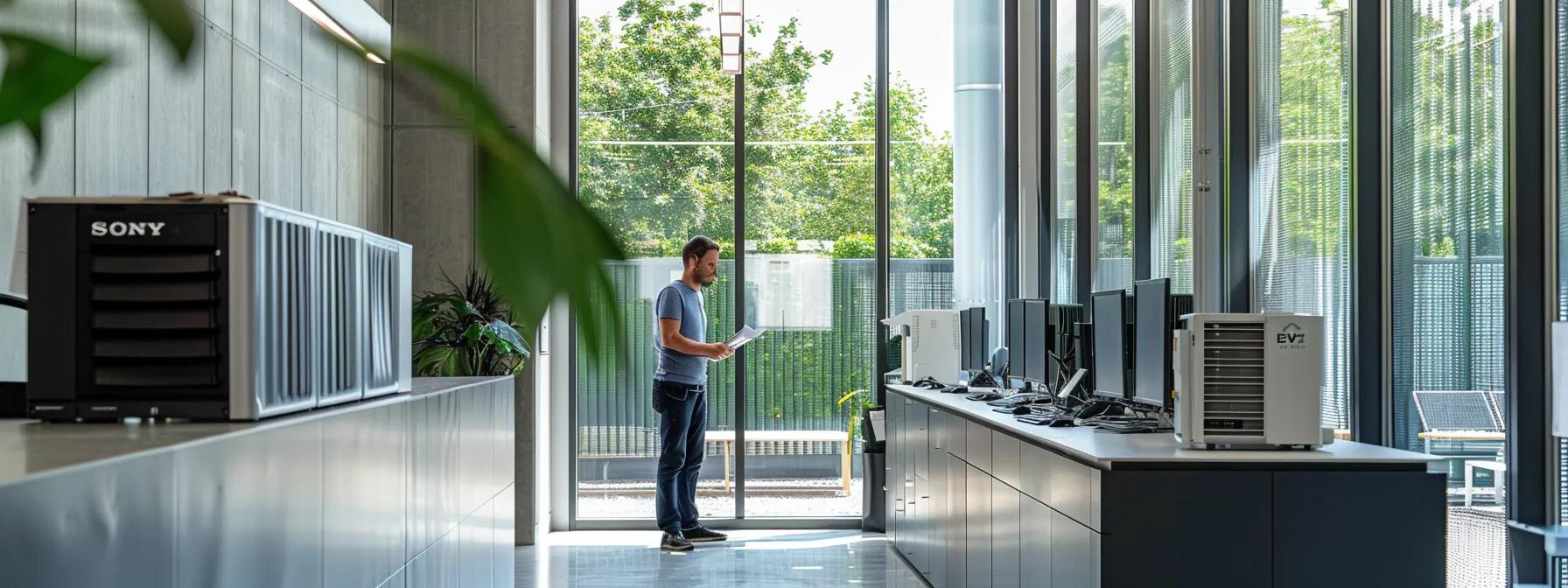Simple AC Maintenance Tips to Prolong Equipment Life


Simple AC Maintenance to Extend Life
Maintaining your air conditioner doesn’t have to be complicated. Homeowners, especially those with furnaces or heat pumps, can extend the life of their AC units by routinely inspecting key components and performing simple DIY tasks. Regular maintenance not only improves system efficiency but also helps reduce the risk of costly repairs, ensuring a comfortable indoor environment even during peak summer months. This article provides a detailed guide on basic filter care, coil cleaning, condensate drain upkeep, outdoor unit care, smart thermostat management, and recognizing when professional service is necessary—if needed, you might request estimate from local experts. With hands-on tips from experienced HVAC professionals, homeowners will learn to perform effective maintenance to protect their investment and prevent water damage, debris buildup, and potential unit failure. By following these straightforward procedures, you can enhance air quality, reduce energy costs, and enjoy uninterrupted cooling throughout the year.
Key Takeaways
- Regular inspection and cleaning of AC filters can dramatically improve indoor air quality and system performance.
- Proper coil maintenance is vital to efficient heat transfer and overall AC longevity.
- Keeping condensate drains clear helps prevent water damage and mold growth.
- Outdoor unit care and smart thermostat management directly affect cooling efficiency.
- Knowing when to call in professionals saves time and prevents further damage.
Mastering Basic Filter Care for Optimal AC Performance

Maintaining clean filters is one of the most accessible and effective ways to extend the life of an air conditioner. Homeowners should inspect and clean their AC filters regularly as clogged filters can decrease airflow, force the system to work harder, and diminish indoor air quality. The overall performance and longevity of your HVAC system are significantly influenced by how well your filters are maintained.
Selecting the Correct AC Filter Type
Choosing the right filter is crucial. Filters come in various types—from fiberglass to pleated—and selecting one that matches your system’s requirements and your indoor air quality needs is essential. A high-quality pleated filter, for example, traps more dust and allergens, which can help prevent particles from entering your system and causing blockages or damage.
A Step-by-Step Guide to Cleaning Reusable AC Filters
Reusable filters offer an eco-friendly and cost-effective solution for many homeowners. To clean these filters, first remove them from the unit and gently vacuum off loose dust and debris. Then, wash the filter in warm, soapy water and rinse thoroughly. Allow it to dry completely before reinstalling. Following these instructions ensures the filter works efficiently and helps maintain cleaner indoor air.
Knowing When to Replace Your AC Filter
Even the best-cleaned filters will eventually wear out. Homeowners should note that filters need replacement when they show physical signs of wear or if cleaning no longer improves airflow. Generally, filters should be replaced every three months, although environmental factors like pet dander or high dust levels may require more frequent replacement. A timely change helps protect both the unit and the occupants’ health.
The Impact of Clean Filters on Air Quality and Unit Longevity
Clean filters contribute to a healthier indoor environment by capturing pollutants and allergens before they enter living spaces. In addition, they ease the load on the refrigerant cycle, reducing energy consumption and extending your AC unit’s lifespan. Studies have shown that maintaining clean filters can improve system efficiency by up to 15%, directly lowering your monthly energy bills.
Diy Tips for Ac Maintenance Involving Filter Checks
Simple DIY practices, such as setting a monthly reminder to inspect and clean the filter, can go a long way. Utilizing a basic checklist that includes examining for tears, discolored spots, or unusual buildup is practical. Homeowners can also benefit from using high-quality filters that withstand multiple cleanings, further reducing maintenance costs while maintaining system performance.
Essential Diy Tips for Ac Maintenance of Coils

AC coils are the heart of the cooling process. They play a vital role in absorbing heat and ensuring efficient operation. By maintaining clean coils, homeowners can significantly improve heat exchange, reduce energy consumption, and prolong the system’s lifespan. Dirty coils obstruct airflow and can lead to system overheating, a common cause of AC failure.
Identifying Evaporator and Condenser Coils
Recognizing the two primary coils in your AC system is the first step toward effective maintenance. The evaporator coils are located inside the air handler and absorb heat from indoor air, while condenser coils are found in the outdoor unit, releasing heat into the atmosphere. Familiarity with these components helps homeowners identify where to focus their cleaning efforts.
Safely Cleaning Your AC Evaporator Coils
Cleaning evaporator coils requires caution. Homeowners should disconnect power before attempting any cleaning. Use a soft brush to gently dislodge dust and debris from the coils and apply a foaming coil cleaner following the manufacturer’s instructions. Rinse gently with water, ensuring not to damage the delicate fins. Regular cleaning of these coils enhances cooling performance and maintains efficient energy transfer.
Clearing Debris From Condenser Coils
Condenser coils, exposed to outdoor elements, are prone to collecting debris such as leaves, grass, and dirt. These obstructions can severely reduce airflow, causing the compressor to work harder. A simple cleaning method involves turning off the power to the unit and using a garden hose on a gentle setting to wash away the buildup. Attention to detail during cleaning can prevent long-term damage and reduce repair costs significantly.
Recommended Cleaning Agents for AC Coils
Selecting an appropriate cleaning agent is essential for preserving the integrity of the coils. A mild detergent specifically designed for HVAC units is recommended, as harsh chemicals can corrode the coils and reduce efficiency. Eco-friendly and non-toxic cleaners are preferred for indoor coils to safeguard both the system and the air quality in your home. Regular use of the right cleaner ensures a consistent, high-performance operation.
Frequency of Coil Cleaning for Extended AC Life
Coil cleaning frequency depends on usage and environmental conditions. In general, homeowners should aim to clean the evaporator coils at least once a year, while condenser coils may benefit from more frequent cleaning during pollen seasons or in dusty environments. Scheduled maintenance can prevent significant efficiency drops, reduce energy costs, and increase the reliability of your AC system over time. Keeping a maintenance log helps track cleaning intervals and ensures timely upkeep.
Keeping AC Condensate Drains Clear and Flowing

A well-maintained condensate drain prevents unwanted water damage and protects your AC unit from malfunction. When drains become clogged, they can lead to water leaks, mold growth, and structural damage along with reduced system efficiency. Homeowners must regularly check the condensate drain line to maintain a safe and efficient operating environment.
Locating Your AC Unit’s Condensate Drain Line
Finding the condensate drain line is the first step for proper maintenance. Typically, this line is positioned near the indoor air handler and exits from the side or bottom of the unit. Identifying this component allows users to inspect for clogs or buildup. Familiarity with its location is essential for routine cleaning and preventive measures.
Techniques for Clearing Clogged AC Drain Lines
A common method for clearing a clogged drain involves using a wet-dry vacuum to remove blockages from the drain line. Additionally, homeowners can flush the line with a mixture of water and vinegar to dissolve debris. Persistent clogs should be cleared with gentle manual tools, ensuring no part of the line is damaged. Regularly clearing the drain lines prevents water back-up and potential mold formation.
Using Natural Cleaners for Drain Line Upkeep
Natural cleaners such as distilled white vinegar or a baking soda solution are excellent for maintaining clean AC condensate drains. These options disinfect and remove buildup without the harsh chemicals that might harm the system. A monthly treatment with a natural solution, followed by flushing with water, preserves the system’s longevity while keeping the drain free of clogs.
Signs Your AC Drain Line Requires Attention
Homeowners should be alert to various warning signs indicating a clogged drain. Evidence such as water leakage around the indoor unit, a musty odor near the system, or visible mold growth on or around the drain line points to necessary intervention. Addressing these issues quickly can prevent more severe water damage and costly repairs.
Diy Tips for Ac Maintenance to Prevent Water Damage
Regular maintenance routines, such as monthly visual inspections and using natural cleaning agents, are effective ways to avoid water damage. Employing a DIY checklist for condensate drains, along with seasonal cleanings, ensures that the system works efficiently. Beyond simple cleaning, maintaining proper drainage prevents flooding and structural damage, safeguarding your home from potential water-related issues.
Outdoor Unit Care for Uninterrupted Cooling
The outdoor condenser unit is exposed to the elements and requires regular maintenance to function optimally. Keeping the outdoor unit free from obstructions and debris ensures efficient airflow and cooling performance. Homeowners can extend the lifespan of their system by protecting the condenser unit from environmental hazards and conducting routine outdoor maintenance.
Ensuring Adequate Airflow Around the Condenser Unit
For optimal performance, ensure the outdoor unit has plenty of space around it. Avoid placing objects like furniture, potted plants, or other obstructions near the condenser. A clear area of at least two feet on each side allows for proper heat dissipation. Good airflow helps the system release absorbed heat efficiently, enhancing overall cooling capacity.
Removing Leaves, Grass, and Debris From the Outdoor Unit
Debris accumulation is a major concern for outdoor condenser units. Regularly inspect the unit and remove any leaves, grass clippings, or dirt that may have collected around it. A gentle brush or a soft cloth can help dislodge stubborn debris without damaging the fins or coils. Keeping the area clean improves efficiency and prevents damage caused by overheating.
Checking and Leveling the Condenser Unit Pad
A level condenser pad ensures that the unit operates smoothly and minimizes vibrations that could lead to mechanical issues. Homeowners should periodically check the pad’s stability, re-leveling it if necessary. This simple task can prevent excessive wear and tear on the unit and contribute to a longer lifespan by reducing stress on the condenser components.
Protecting Your Outdoor AC Unit in Off-Seasons
During the colder months, outdoor AC units can suffer from frost and freezing weather. Covering the unit with a breathable cover or relocating loose parts, when possible, can protect against the harsh climate. It’s also beneficial to schedule a professional check-up before the seasonal change to optimize the unit’s readiness for extreme weather conditions.
Simple Landscaping Diy Tips for Ac Maintenance and Efficiency
Landscaping around the AC unit plays a role in maintaining its efficiency. Trim any overgrown trees or shrubs that may block airflow, and keep the area free of unneeded vegetation. A well-designed landscape not only enhances the aesthetic appeal of your home but also supports the AC unit’s performance by ensuring unobstructed air circulation. Strategic landscaping can reduce the stress on the system, thereby extending its operational life.
Smart Thermostat Management for AC Longevity
Managing your thermostat effectively can significantly enhance the efficiency and lifespan of your AC unit. A properly calibrated thermostat ensures that the system maintains the desired indoor temperature without excessive cycling. By adopting smart thermostat features, homeowners can enjoy improved control over their environment and lower energy bills while extending the life of the entire system.
Calibrating Your Thermostat for Accurate Readings
Ensuring your thermostat is accurately calibrated is vital. If the thermostat reading is off by even a few degrees, it can lead to unnecessary system cycling, which decreases efficiency and wears down components faster. Homeowners should consult the device’s manual or request professional calibration to verify its accuracy and ensure that the indoor environment is maintained at optimal conditions.
Ideal Thermostat Settings for Efficiency and Comfort
The balance between comfort and energy efficiency is achieved through proper thermostat settings. Experts recommend keeping the thermostat at about 78°F during the summer when you are at home, and slightly higher when you are away. This strategy minimizes the workload on the AC system while ensuring a comfortable indoor environment. Consistent temperature settings help maintain steady operation, reduce wear on the compressor, and ultimately lead to a longer AC lifespan.
Utilizing Programmable Thermostat Features
Modern programmable and smart thermostats offer the functionality to schedule temperature adjustments automatically. By setting different temperatures for various times of the day, homeowners can optimize comfort during active hours and conserve energy during periods of inactivity. Such features not only contribute to energy saving but also reduce the strain on the HVAC system by preventing constant operation at high workloads.
How Consistent Thermostat Use Extends AC Life
Consistent and thoughtful use of the thermostat reduces energy spikes and unnecessary cycling, both of which are harmful to the AC unit over time. By maintaining a steady room temperature, the system experiences less stress and operates more efficiently. Research indicates that stable thermostat settings can extend the lifespan of an AC unit by reducing the wear on mechanical and electrical components. This preventive measure plays an essential role in overall HVAC maintenance and savings on potential repair costs.
Recognizing When Professional AC Service Is Needed
While DIY maintenance is valuable, it is equally important to recognize the signs indicating that professional help is necessary. Some AC problems require advanced diagnostics and repairs that go beyond typical homeowner capabilities. Knowing when to call in an HVAC technician can prevent further damage and even extend the life of your system.
Sounds and Smells Indicating AC Problems
Unusual sounds such as grinding, rattling, or high-pitched squeals can indicate mechanical issues that need professional attention. Similarly, any strange odors, particularly burning smells, may suggest electrical problems or overheating components. If these symptoms persist despite routine maintenance, it is advisable to contact a qualified technician who can accurately diagnose and resolve the issue.
Performance Issues Beyond Simple AC Maintenance
When an AC unit struggles to maintain the desired temperature, cycles on and off too frequently, or shows signs of reduced cooling efficiency, more in-depth troubleshooting is required. These performance issues might stem from refrigerant leaks, compressor problems, or issues within the electrical system. Professional diagnostics offer a thorough examination and repair, thereby preventing small issues from evolving into major failures.
Electrical Concerns Requiring Expert Attention
HVAC systems involve intricate electrical components that can become hazardous if not handled properly. Problems such as frequent tripping of circuit breakers or signs of wiring damage necessitate professional intervention. An experienced HVAC technician has the tools and expertise to address these concerns safely, ensuring that all repairs are performed in compliance with building codes and safety standards.
Understanding Refrigerant Issues
Refrigerant plays a critical role in the cooling cycle of an AC unit. Low refrigerant levels, often caused by leaks, can result in poor cooling performance and system overwork. Detecting and repairing refrigerant issues requires specialized knowledge and equipment, as handling refrigerants improperly can be dangerous. Professional service ensures that the refrigerant is correctly charged and that any leaks are adequately repaired to restore system efficiency.
Knowing Your Limits With Diy Tips for Ac Maintenance
There are limits to what a homeowner can safely and effectively manage. While DIY maintenance is beneficial for routine cleaning and simple adjustments, tasks involving electrical work, refrigerant handling, or significant mechanical repairs are best left to professionals. Recognizing these limits not only safeguards your health and property but also maintains the integrity and warranty of your AC system.
Final Thoughts
On Time Air’s commitment to quality HVAC services is echoed in every maintenance tip shared here. Regular DIY upkeep—ranging from filter cleaning to condensate drain maintenance—ensures that your air conditioner runs efficiently and lasts longer. However, recognizing when professional help is necessary is equally vital to prevent small issues from turning into significant, costly repairs. Homeowners are encouraged to integrate these maintenance practices into their routine while relying on trusted HVAC professionals when needed.
Frequently Asked Questions
Q: How often should I change or clean my AC filter? A: It is generally recommended to change or clean your AC filter every three months. However, if your home experiences high dust levels or has pets, more frequent maintenance may be necessary to ensure optimal airflow and efficiency.
Q: What are the signs that my AC coils need cleaning? A: Signs include reduced cooling performance, higher energy bills, and visible dirt or debris on the coils. Additionally, if the unit produces unusual noises or excessive condensation, it may indicate that the coils are dirty and require cleaning.
Q: Why is it important to keep the condensate drain clear? A: A blocked condensate drain can cause water back-up, leading to leaks, mold growth, and potential water damage in your home. Regularly cleaning the drain line prevents these issues and helps maintain efficient AC operation.
Q: When should I consider professional AC service? A: If your AC produces unusual sounds, smells burning, struggles to maintain temperature, or shows signs of refrigerant leaks, it is advisable to contact a professional HVAC technician. These issues often require specialized tools and expertise.
Q: How can smart thermostat settings benefit my AC system? A: Smart thermostat settings help maintain consistent indoor temperatures, reduce unnecessary cycling, and optimize energy usage. This management not only improves comfort but also reduces the overall stress on your AC system, extending its lifespan.